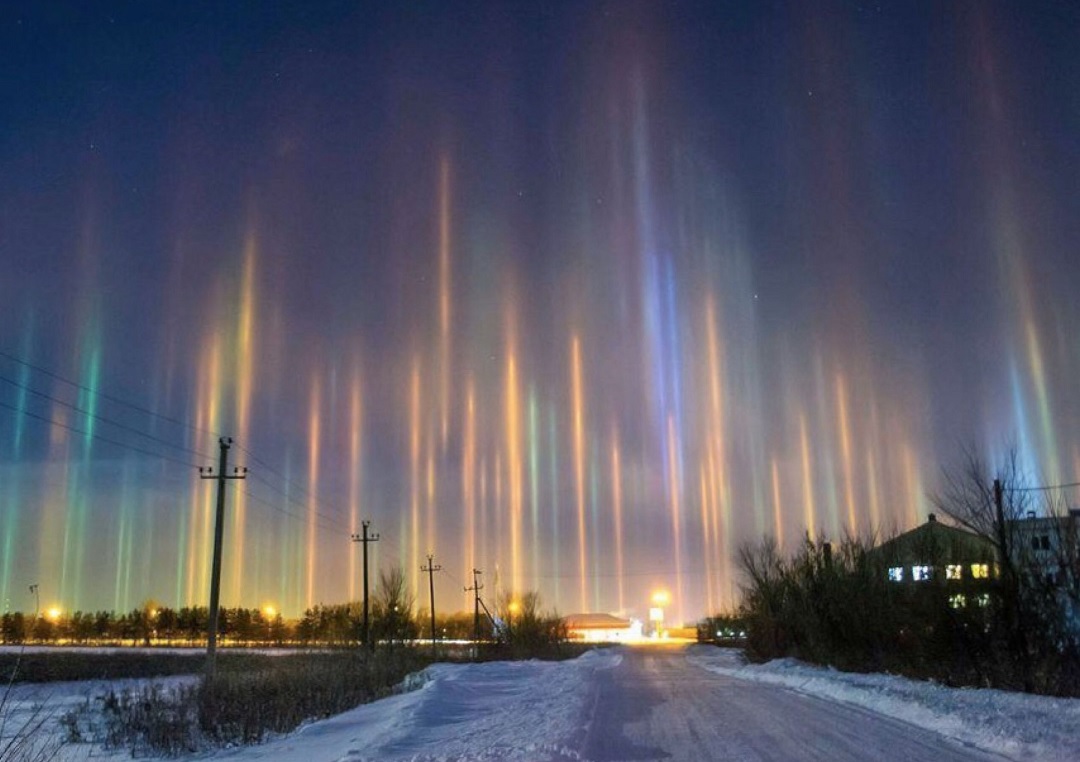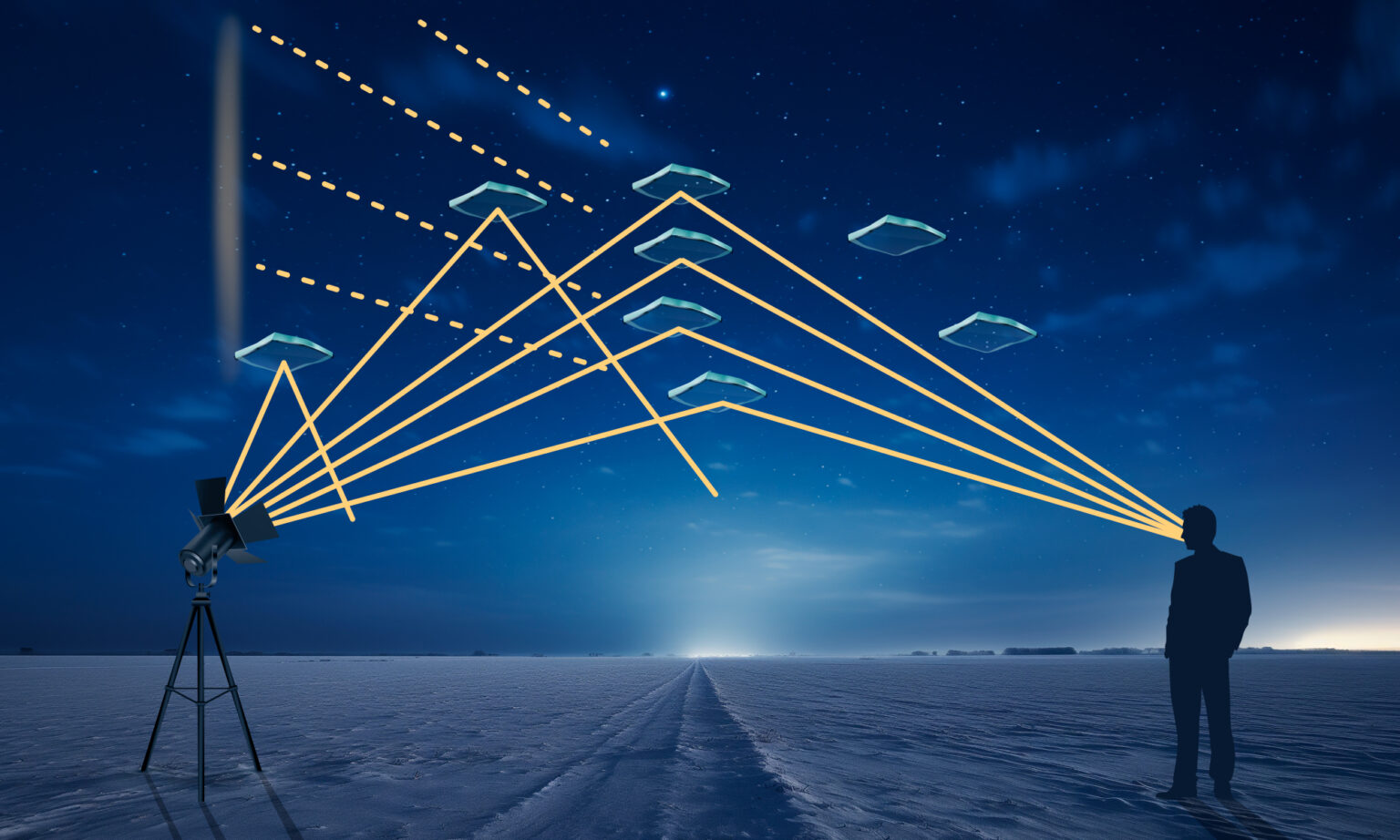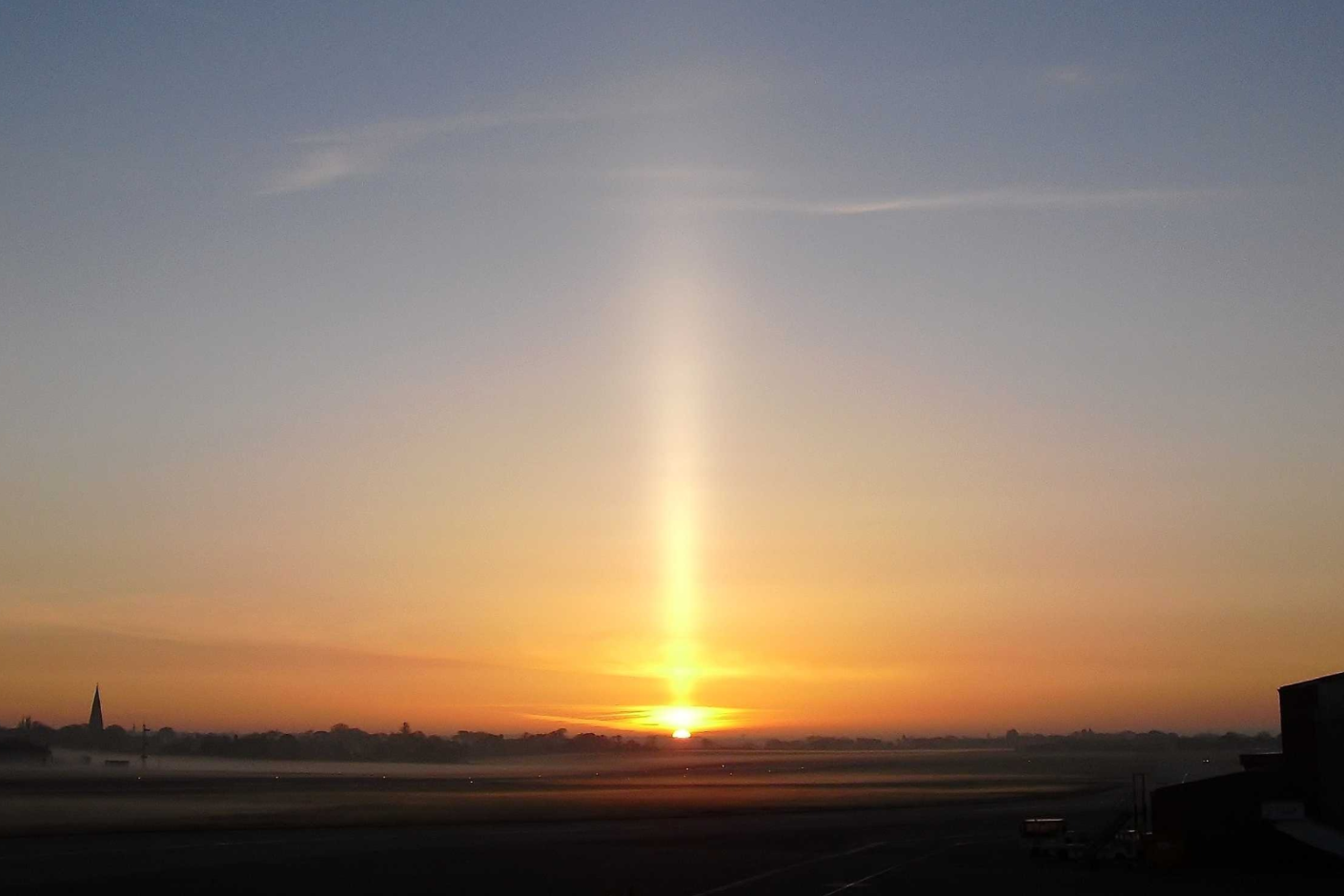The unusually cold weather in Ukraine in recent days has led to the appearance of interesting optical phenomena that many have not seen before or simply do not pay attention to, although they cannot be called particularly rare. Recently, residents of large cities have observed bright light pillars rising above all bright light sources. Let’s try to figure out what this optical effect is related to and what it indicates.
The Earth’s air always contains a certain amount of water vapor. Its maximum concentration is determined by temperature: the warmer it is, the more water can be contained in one cubic meter. The total mass of atmospheric water per unit volume also depends on pressure, and it, in turn, decreases with altitude. In this case, we are talking about a surface layer of air with a pressure of about 1 bar (100 thousand pascal).
In our climate, water rarely completely “exhausts” its share in the atmosphere. Actually, based on its possible content at a given temperature, an indicator such as relative humidity is calculated. With a decrease in temperature and other unchanged characteristics, it begins to increase and, at a certain point, reaches 100%. What happens with further cooling? The excess vapor condenses, turning into liquid water. Its small droplets partially remain in the air in the form of fog, and partially settle on hard surfaces — dew falls. Therefore, the temperature at which relative humidity becomes 100 percent at a specific concentration of water vapor is called the “dew point”.

If the temperature drops below zero Celsius, vapor condensation no longer forms spherical water droplets but ice crystals — tiny flat hexagonal prisms. Their further behavior depends on the direction in which the crystallization process moves. If the randomly oriented plane of the crystalline turns out to be slightly inclined to the vertical, it begins to fall and reaches the earth’s surface quickly enough, which means that it does not participate in the creation of optical effects. If it is close to the horizontal, the ice plate “hangs in the air” for a long time. Its large shiny facets reflect light rays mainly in the vertical plane, creating the illusion for the observer that a “light pillar” appeared above the light source.

Of course, for such a phenomenon to occur, it is not enough to quickly cool the surface layer of air. It is also necessary that its humidity initially be close to 100%. And it is also necessary to have a complete absence of wind and, of course, the presence of sufficiently powerful light sources. The latter condition is most often fulfilled in large cities, where there is rarely a sharp cooling. Therefore, we do not see “light pillars” very often, and their appearance attracts everyone’s attention.
Interestingly, horizontally oriented ice plates can form not only in the surface layer of air but also at high altitudes. There they reflect the light of the most powerful source — the Sun. In such cases, before its setting and some time after it (and vice versa — before dawn and some time after the sunrise of our luminary), a characteristic light pillar is observed above it. It is often combined with other atmospheric optical phenomena such as halo and parhelion.

It should be remembered that all of these phenomena are observed in the Earth’s atmosphere at altitudes up to 20 km and are caused by processes in the gas shell of our planet. At the same time, auroras occur much higher. They are associated with emissions of charged particles from the surface of the Sun, that is, they are the result of changes in the interplanetary environment — the so-called space weather.
Follow us on Twitter to get the most interesting space news in time
https://twitter.com/ust_magazine


